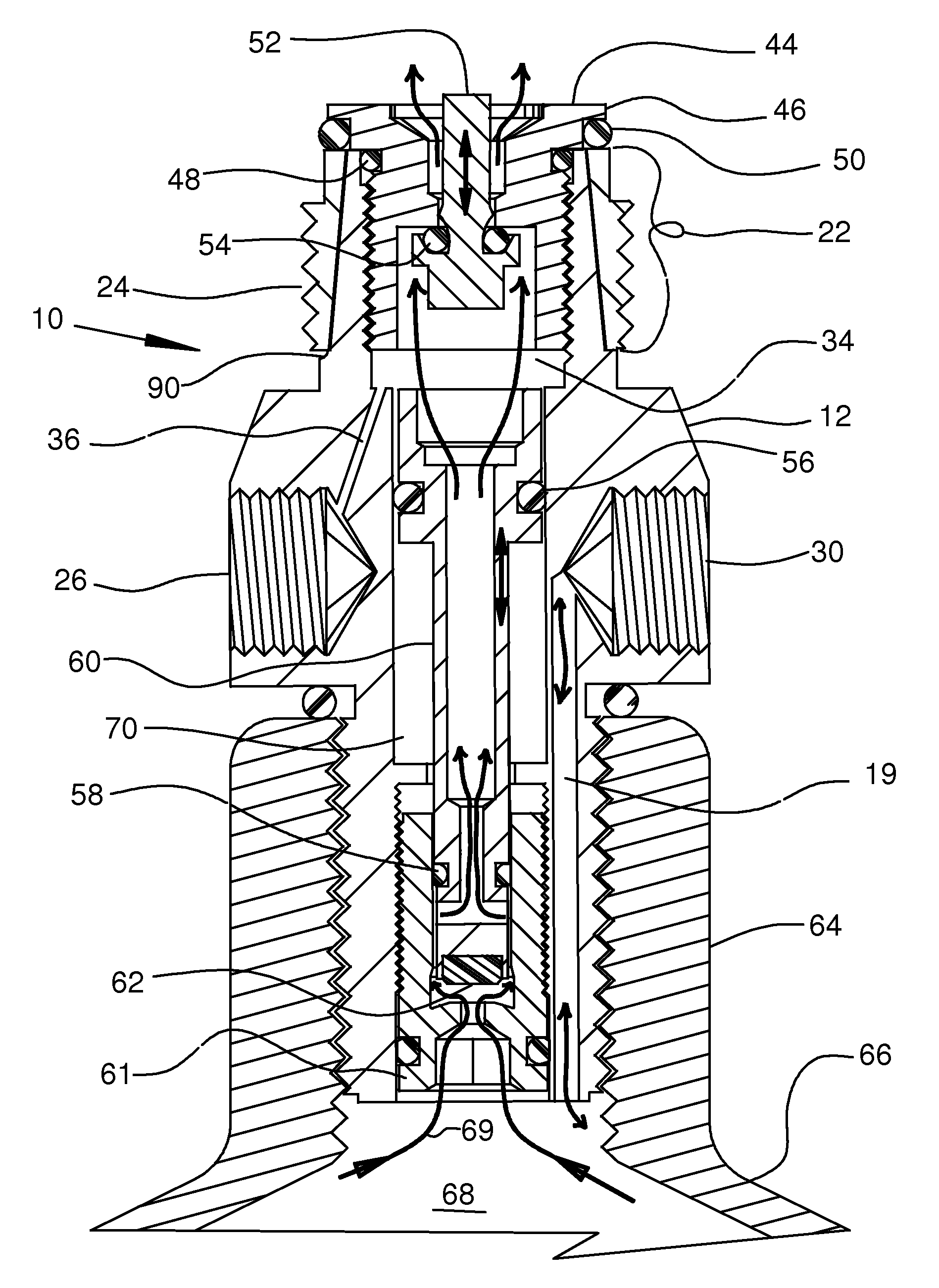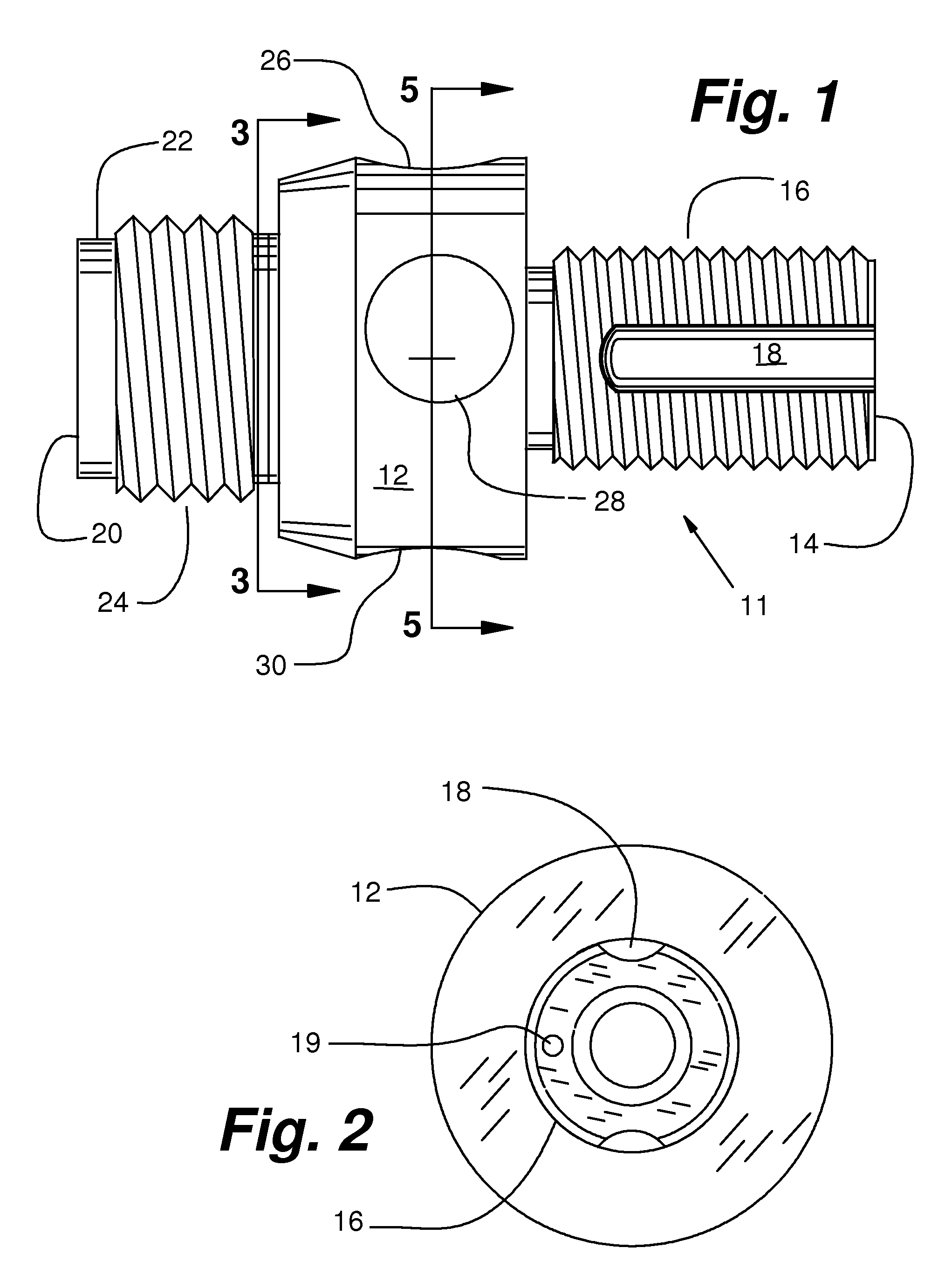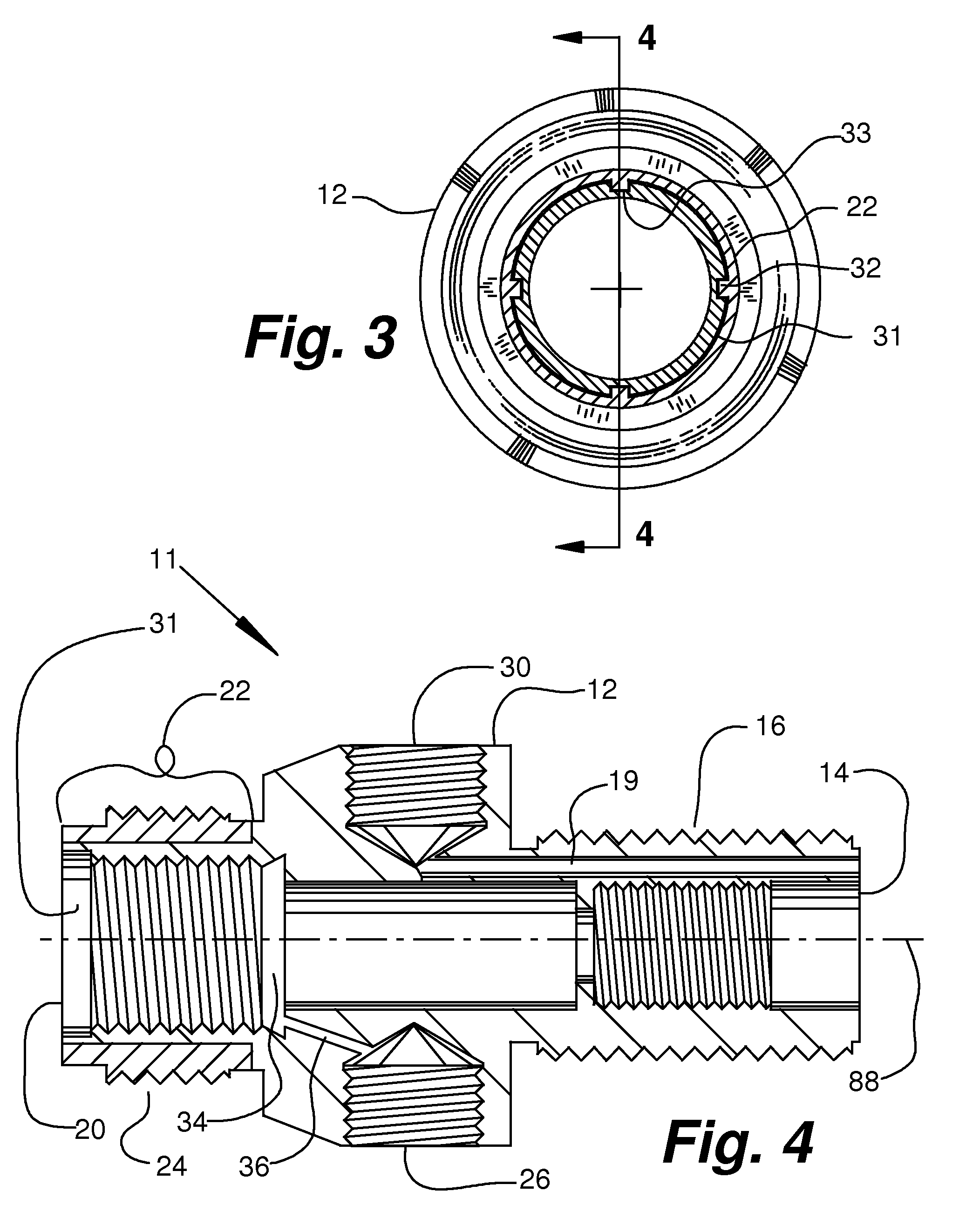[0017]In embodiments, a regulator is provided that provides improvements in safety, reliability, and functionality. Some embodiments provide improved functionality, particularly when the pressure within the canister is below the pressure at which the regulator is set to deliver gas charges to an attached device. Certain embodiments provide flexibility in accommodating or adapting various components for improved functionality and wider usage of common components. In some embodiments, improvements are achieved by reducing the number and complexity of the housing and operating components, which improves reliability and reduces cost. In some embodiments, fewer
machining operations are required to manufacture the housing, thus reducing costs and improving quality.
[0030]Similarly, according to certain embodiments comprising stud-socket sets, one or more studs are located on either a sleeve member or a shoulder portion of the body of the regulator. The studs are adapted to non-rotatably engage with
mating sockets in the shoulder portion or the sleeve member. In certain embodiments comprising stud-socket sets, 3 studs and
mating sockets are sufficient to allow the regulator and tank to be rotated during
assembly to bring a pressure gauge for the tank into the operator's view. From 2 to 4
mating stud-socket sets are sufficient for most uses, although from 1 to 5 or 6 or more such stud-socket sets may be employed, if desired. Where no rotatable positioning of the components of the system relative to one another is desired, 1 such stud-socket set may be sufficient. In certain embodiments comprising stud-socket sets, the studs and mating sockets are arrayed generally symmetrically around the longitudinal axis of the shoulder portion of the body. Thus, each sleeve member can be installed so that any stud is received in any mating socket. Alternatively, certain other embodiments may include a greater number of mating sockets than studs, thereby allowing a sleeve comprising fewer studs to engage the selected mating sockets that allow elements of the system, for example, the pressure gauge port, to be positioned during
assembly of the system as may be desired. Alternative embodiments may achieve this
advantage by providing a single polygonal boss-socket engagement between the sleeve member and the regulator body.
[0031]In addition, according to certain embodiments enabling a frictional engagement between a sleeve member and the body of the regulator, the inner engagement surface of the sleeve member is adapted to non-rotatably engage the outer engagement surface of the
distal portion of the body. As with other embodiments, this allows the regulator and tank to be rotated during
assembly to bring a pressure gauge for the tank into the operator's view. However, an embodiment allowing frictional engagement offers the further
advantage of enabling non-rotational engagement to occur in an
infinite number of rotational positions.
[0033]In embodiments, a
discharge side seal member is removably mounted in the distal portion of the body. According to certain embodiments, the discharge side seal member is adapted to releasably restrain the sleeve member from sliding axially of the distal portion. Such restrain is accomplished, for example, by providing the discharge side seal member with a
flange that is adapted to extend generally radially over a distal end of the sleeve member to releasably restrain the sleeve member from sliding axially of the distal portion of the body. The radial extent of the
flange is such that it does not interfere with the threadable engagement of the sleeve with an associated appliance or other
system element.
[0036]Typically, the low side pressure relief port is exposed to the level of pressure that exists within the pressure chamber in the body of the regulator. The purpose of the low pressure relief port is to prevent over-pressurization of the pressure chamber with its attendant risk of exploding the regulator and / or the apparatus that is attached to the regulator. The low pressure side relief port is adapted to opening to relieve pressure in the pressure chamber responsive to a level of pressure in the pressure chamber that exceeds a predetermined amount of pressure. The predetermined amount of pressure in the pressure chamber is typically several hundred
pounds per square inch below the maximum safe
pressure level for the pressure chamber and associated apparatus. In certain embodiments an extra measure of safety is provided by enabling a second low pressure side relief member in the form, for example, of seals for the pressure chamber that release to allow gas to vent from the pressure chamber at approximately the same pressure that activates the opening of the low pressure side relief port.
[0043]In some embodiments of the regulator wherein excess pressure within the pressure chamber is relieved by blowing past the seals of the pressure chamber to
atmospheric pressure, the provision of a low pressure side relief port provides a further measure of safety.
 Login to View More
Login to View More  Login to View More
Login to View More 


